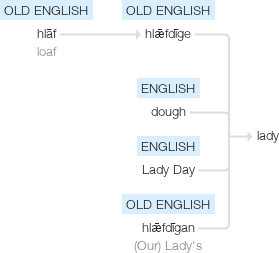Mysteries of vernacular: Lady - Jessica Oreck and Rachael Teel
128,876 Views
585 Questions Answered
Let’s Begin…
Why do we call women ladies?
Well, etymologically-speaking, the word comes from the Old English
words for hlaf (bread) and daege (maid), which, combined, mean the female
head of the household and eventually indicated high social standing.
Jessica Oreck and Rachael Teel follow the word to its contemporary
position simply describing a female.
Additional Resources for you to Explore
In phonology, syncope (Greek: syn- + koptein “to strike, cut off”) is the loss of one or more sounds from the interior of a word, especially the loss of an unstressed vowel. Various sorts of colloquial reductions might be called "syncope". It is also called compression.
The word lady is a civil term of respect for a woman, specifically the female equivalent to gentleman or lord, and in many contexts a term for any adult woman. Once confined to usage when specifically addressing women of high social class or status; over the last 300 years, the term has spread to embrace every adult woman.
This graph visually shows the origin of the word lady:

This graph shows the usage of the word lady from 1800 to 2010:

About TED-Ed Animations
TED-Ed Animations feature the words and ideas of educators brought to life by professional animators. Are you an educator or animator interested in creating a TED-Ed Animation? Nominate yourself here »
Meet The Creators
- Director Jessica Oreck
- Producer Rachael Teel
- Educator Jessica Oreck, Rachael Teel



